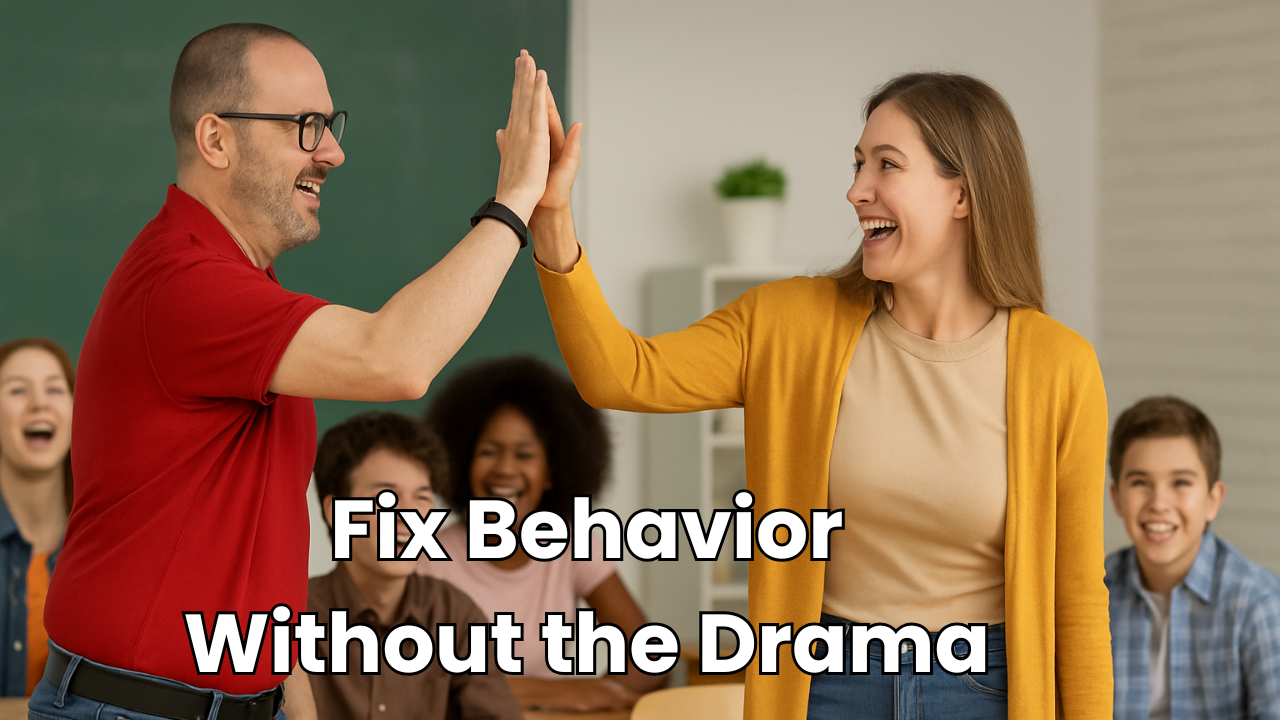Empower Every Learner: Embrace Neurodiversity in Language Teaching
Introduction:
Do you want to reach every learner in your language classroom, especially those with diverse learning needs? Curious if embracing neurodiversity will mean big changes to your teaching methods? Or maybe you’re wondering how these approaches can truly help your students succeed?
If so, you’re in the right place.
In this article, you’ll discover easy, practical strategies to embrace neurodiversity without overhauling your entire approach. You’ll learn how small adjustments can lead to big improvements for all learners. Stick around for actionable steps, real-life examples, and success stories to show you how to start empowering every student today!
What is Neurodiversity?
Before we dive into strategies, let’s briefly cover what neurodiversity is and why it’s critical in the language classroom. Neurodiversity refers to the range of differences in individual brain function and behavior. Rather than seeing these differences as deficits, the neurodiversity movement promotes the idea that cognitive variation is natural and valuable.
Students in your classroom may have ADHD, dyslexia, autism, or other neurodiverse traits, but they also bring unique strengths and perspectives. The goal is not just to accommodate these learners but to embrace their differences, recognizing that all students can thrive when we adjust our teaching strategies to support diverse ways of thinking.
Why Embracing Neurodiversity Benefits Every Learner
One of the biggest myths about neurodiverse strategies is that they only benefit students with diagnosed learning needs. In reality, these strategies benefit every learner. When you make language learning more inclusive, you increase engagement, retention, and comprehension for the entire class.
For example, breaking down complex concepts into smaller, digestible chunks helps not just students with ADHD or processing difficulties—it also benefits students who might struggle with abstract grammar concepts or vocabulary retention. By integrating these techniques, you create a classroom environment that’s more responsive to the needs of all learners, boosting confidence and participation across the board.
A Quick Win:
Try offering instructions in multiple formats—verbally, visually, and in written form. This ensures that no matter how students process information, they can understand what’s expected of them. You'll see immediate improvements in engagement.
Practical Strategies to Embrace Neurodiversity in Your Language Classroom
Now let’s get into the practical side of things. Below are some easy strategies to integrate neurodiversity into your language teaching. These are quick wins that you can apply with minimal effort, but they have a big impact on student outcomes.
1. Use Multiple Modalities
Not all students learn best through listening or reading alone. Some need to see visuals, others need to move their bodies, and some benefit from auditory cues. By incorporating a variety of modalities, you reach students who process information differently.
- Visuals: Use images, charts, or symbols to represent vocabulary and concepts. For instance, when teaching new words, show a picture alongside the word to help visual learners make connections.
- Kinesthetic Activities: Get students moving with activities like charades, acting out sentences, or using gestures to reinforce meaning. This is particularly effective for students who learn by doing.
- Auditory Cues: Add songs, rhythm, or music to language learning to reinforce structures. This can be as simple as chanting conjugations or creating a rhythm for word endings.
A Quick Win:
For your next lesson, try incorporating just one visual and one movement activity. You’ll likely notice that students are more engaged and retain the material better.
2. Break Down Tasks and Scaffold Learning
Neurodiverse students often need tasks broken down into smaller, more manageable parts. This strategy doesn’t just help them—it supports all learners in processing complex information more effectively.
- Chunking Tasks: Instead of giving students a large assignment, break it into smaller steps. For example, when teaching a new grammatical structure, teach one small piece at a time. Start with the basic concept, then slowly layer in more complexity.
- Scaffolding: Gradually remove supports as students build their skills. For instance, you might begin with a fill-in-the-blank activity using word banks, then progress to having students create sentences from scratch once they’re more comfortable.
A Quick Win:
Take an existing assignment and break it into three smaller tasks. Scaffold each task with support, then slowly remove that support over the next few lessons.
3. Offer Flexible Pacing
Students process information at different speeds. While some students may grasp a concept right away, others need more time to internalize it. Offering flexible pacing allows neurodiverse students—and everyone else—the opportunity to work at a pace that suits their needs.
- Differentiated Assignments: Offer tiered assignments where students can choose the level of challenge that works for them. For example, when working on vocabulary, allow students to choose whether to complete a basic matching exercise or create their own sentences using the words.
- Flexible Deadlines: When appropriate, allow flexibility with due dates. Neurodiverse students, especially those with executive function challenges, might need more time to complete assignments, and offering that flexibility can reduce anxiety and improve performance.
A Quick Win:
For your next homework assignment, offer two or three options that vary in difficulty. Allow students to choose the one that fits their current level of understanding.
4. Comprehension Checks
Often, neurodiverse students struggle with retaining key points from a lesson. Regularly checking in with them to assess their understanding helps ensure that no one is falling behind.
- Thumbs-Up/Thumbs-Down: After explaining a concept, ask students to give a thumbs-up if they understand or a thumbs-down if they’re unsure. This quick, nonverbal check lets you know where the class stands.
- Exit Tickets: Before leaving class, have students write down one thing they learned and one question they still have. This helps you gauge whether students are retaining the material.
A Quick Win:
At the end of your next class, try the exit ticket strategy. It will give you immediate feedback on who is grasping the material and who might need more support.
How to Implement These Strategies Without Overhauling Your Approach
One of the biggest concerns teachers have is that embracing neurodiversity will require a complete overhaul of their teaching methods. The good news? It doesn’t. These strategies are all about small tweaks that you can incorporate into your existing routine without feeling overwhelmed.
Start by implementing just one or two strategies that seem manageable. Maybe you’ll begin with adding visuals to your lessons or breaking down large assignments. Over time, these small changes add up to a more inclusive classroom that benefits all learners. You don’t need to do everything at once—focus on what feels doable for you.
A Quick Win:
Pick one strategy from this article and try it for a week. Maybe it’s as simple as adding a visual aid or checking in with students more frequently. Once you feel comfortable, layer in another.
Looking for more classroom management strategies to support neurodiverse learners? Check out our Dynamic Discipline Course, where you’ll learn how to build strong relationships with students and create a positive, inclusive learning environment.
Success Stories and Real-Life Examples
Sometimes the best motivation comes from hearing what works for other teachers. Below are two real-life examples of how neurodiverse strategies transformed language classrooms.
Case Study 1: Visual Aids for Vocabulary
Mrs. Rodriguez teaches high school Spanish. She noticed that her neurodiverse students struggled with vocabulary retention, so she began incorporating simple visuals into her lessons. Instead of just writing the word on the board, she also displayed an image. Within weeks, her students—especially those with ADHD—were remembering vocabulary with more ease. And it didn’t just help neurodiverse students; the entire class benefited from the visual reinforcement.
Case Study 2: Scaffolding Grammar Concepts
Mr. Lee teaches middle school French. When introducing new grammatical structures, he used to throw everything at his students at once. After learning about scaffolding, he started breaking down grammar lessons into smaller, more manageable chunks. Over time, he gradually increased the complexity. His neurodiverse students, who had previously struggled with processing the information, began to thrive. By the end of the term, overall comprehension scores improved significantly.
These success stories highlight how small changes can lead to big results. By incorporating neurodiverse strategies, you can see similar improvements in your own classroom.
Addressing Challenges and Managing Classroom Dynamics
Adopting neurodiverse strategies is rewarding, but it’s not without its challenges. You might wonder how to balance the needs of neurodiverse students with the rest of the class, or you may feel concerned about managing time effectively. Here are some tips to help you navigate those challenges:
- Time Management: Start small. Incorporate one strategy at a time rather than trying to change everything at once. This ensures you’re not overwhelmed and allows you to gauge what works best.
- Balancing Needs: Remember that these strategies benefit all students, not just neurodiverse ones. You’re not catering to a small subset—you’re improving learning outcomes for everyone.
Need more help managing your classroom dynamics? Our Dynamic Discipline Course is designed to help you create a supportive environment where every student can thrive.
The Long-Term Impact: Preparing Students for Success
Embracing neurodiversity in your language classroom isn’t just about short-term gains. By creating an inclusive, supportive environment, you’re preparing your students for long-term success. Neurodiverse strategies help students become more confident, independent learners, and these skills will serve them throughout their academic journey and beyond.
Action Steps: How to Get Started Today
Ready to start? Here are three simple action steps you can take to begin embracing neurodiversity in your classroom:
- Choose a Strategy: Pick one strategy from this article, such as using multiple modalities or scaffolding tasks.
- Start Small: Implement the strategy in one lesson or activity this week.
- Reflect and Adjust: After trying it, reflect on what worked and make adjustments as needed.
Want more classroom management tools to help every learner succeed? Enroll in our Dynamic Discipline Course and learn how to build a positive, neurodiverse-friendly classroom environment.
Conclusion
Embracing neurodiversity doesn’t have to be overwhelming or time-consuming. By making small, simple changes—like using visuals, breaking down tasks, and offering flexible pacing—you can create an inclusive learning environment that benefits every student in your classroom. These strategies not only support neurodiverse learners but improve outcomes for all.
Start small, stay consistent, and watch as your classroom transforms into a place where every learner is empowered to succeed.
Key Takeaways
- Neurodiversity benefits all learners, not just those with specific needs – Embracing neurodiverse strategies creates a more inclusive environment that boosts engagement and comprehension for every student in your classroom.
- Simple adjustments like using multiple modalities and breaking down tasks can lead to significant improvements in student understanding and retention without requiring an overhaul of your teaching methods.
- Scaffolding and offering flexible pacing are powerful tools for supporting neurodiverse learners and ensuring all students can work at a pace that suits their learning style.
- Regular comprehension checks, like exit tickets or thumbs-up/thumbs-down responses, help ensure no student is falling behind and allows teachers to make timely adjustments.
- Start small and build over time – Begin by implementing one or two strategies from the article, and gradually add more as you see improvements in your classroom dynamics and student success.



